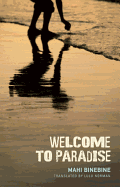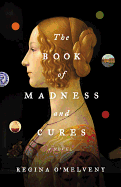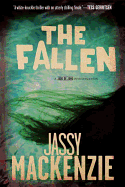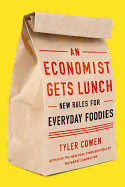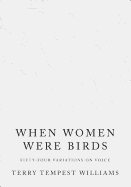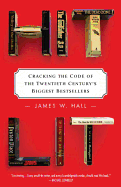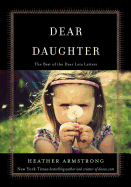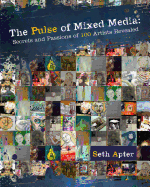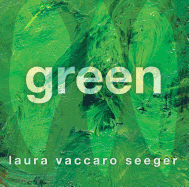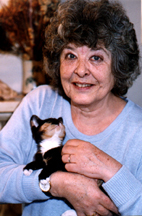 Few authors have made an impact as lasting as fantasy author Diana Wynne Jones--not just on readers, but also on other writers and editors. She was a writer's writer and a reader's reader until her death last year. To hear two of her longtime editors tell it, Wynne Jones (Howl's Moving Castle and The Chronicles of Chrestomanci) could be an intimidating presence. As Virginia Duncan, v-p and publisher of Greenwillow Books, and Sharyn November, senior editor of Viking Children's Books and editorial director of Firebird, prepared to cross the Atlantic for her memorial on Sunday in the U.K., they shared with us a few of their favorite memories of this peerless writer.
Few authors have made an impact as lasting as fantasy author Diana Wynne Jones--not just on readers, but also on other writers and editors. She was a writer's writer and a reader's reader until her death last year. To hear two of her longtime editors tell it, Wynne Jones (Howl's Moving Castle and The Chronicles of Chrestomanci) could be an intimidating presence. As Virginia Duncan, v-p and publisher of Greenwillow Books, and Sharyn November, senior editor of Viking Children's Books and editorial director of Firebird, prepared to cross the Atlantic for her memorial on Sunday in the U.K., they shared with us a few of their favorite memories of this peerless writer.
What was Diana Wynne Jones like?
Virginia Duncan: Diana Wynne Jones terrified me, and she made me laugh. It was thrilling to work with her, and I know that Greenwillow's founder, Susan Hirschman, and all of the imprint's editors and copy editors over the years felt the same way. I met her in person twice, once when Susan and I traveled together to a conference in the U.K. at which Diana was speaking--I remember we had dinner in an actual castle, I remember we were worried about her legendary travel jinx....
What was "her legendary travel jinx"?
Diana believed she suffered from (and many others agreed with her) a travel jinx. Literally, she could not go anywhere without extraordinary things happening. Sometimes these things involved injuries. Often they were more magical and unexplained. If you google "Diana Wynne Jones travel jinx," you will find a lot of interesting things.
And the other time you met in person?
Duncan: I visited her at home in Bristol--oh, those steep stairs! We mostly communicated via e-mail and a handful of actual letters. I'll save the e-mails forever. They're full of hilarious anecdotes about bad luck and animals, and bad luck with animals, especially cats. The letters were scary because the arrival of one meant that she didn't like the copy editing and she needed me to intervene. (That's putting it mildly.) I'll save those, too.
Sharyn, how did you first connect with Diana Wynne Jones?
Sharyn November: I started working with Diana in 2001, when she became a member of my Firebird Editorial Board--and trust me, it took all of my courage to ask her. Our relationship flowered, and her short stories were included in Firebirds and Firebirds Rising, the imprint's first two anthologies; she also wrote a short novel for me, The Game.
And that led to other projects?
 November: Possibly the most delightful project we worked on was The Tough Guide to Fantasyland. It was published in 1994, and was a Hugo and World Fantasy Award Finalist. The conceit: imagine that every sword-and-sorcery novel takes place in the same country, which is called Fantasyland. The Tough Guide is a travel guidebook, with entries for everything from DRAGONS to STEW to COLOR CODING (red hair indicates magical ability; blue eyes indicate goodness). It is hilarious, and teachers often assign it to writing classes to keep out clichés!
November: Possibly the most delightful project we worked on was The Tough Guide to Fantasyland. It was published in 1994, and was a Hugo and World Fantasy Award Finalist. The conceit: imagine that every sword-and-sorcery novel takes place in the same country, which is called Fantasyland. The Tough Guide is a travel guidebook, with entries for everything from DRAGONS to STEW to COLOR CODING (red hair indicates magical ability; blue eyes indicate goodness). It is hilarious, and teachers often assign it to writing classes to keep out clichés!
You two worked on a revision of that together, didn't you?
November: I thought it would be fun to break it down and put it together again in the format of an actual travel guide. And fun it was. I stayed with Diana in Bristol, and we spent hours over coffee (her), tea (me) and snacks (both of us), looking at Let's Go: England and Fodor's, thinking out loud, scribbling and laughing. Over the next months, she wrote additional material, including some new entries (among them "How to Write a Ballad" and "What to Order at an Inn"--short answer: nothing; you will always be served stew and beer), and a list of Other Tough Guides. We came up with a list of symbols based on the universal symbol alphabet in order to code the entries; we wrote effusive cover copy. I cannot crack open the book without cracking a smile.
 How will you continue to bring her work to a new audience?
How will you continue to bring her work to a new audience?
Duncan: Greenwillow Books published Dogsbody (one of my favorites) in the spring of 1977, and we published and also reissued her outstanding books year-in and year-out for the next 35 years. We've just released Earwig and the Witch, illustrated by Paul O. Zelinsky, and we'll publish Reflections--a collection of speeches, essays and biographical pieces written and chosen for the book by Diana before she died--in September of this year.
November: We've just reissued definitive paperback editions of Dogsbody (with an introduction by Neil Gaiman), Fire and Hemlock (introduction by Garth Nix, and including "The Heroic Ideal," an essay Diana wrote about the novel) and A Tale of Time City (introduction by Ursula K. Le Guin).
You may join in a celebration of and conversation about Diana Wynne Jones, along with writers such as Neil Gaiman, librarians, booksellers and fellow fans. --Jennifer M. Brown
Diana Wynne Jones Remembered
 But perhaps, since there is so much news about the lack of a prize, with frequent mention of the three finalists--Swamplandia!, The Pale King and Train Dreams--all three books will get a boost instead of just one. And bookstores are figuring out ways to promote the three along with other worthy books.
But perhaps, since there is so much news about the lack of a prize, with frequent mention of the three finalists--Swamplandia!, The Pale King and Train Dreams--all three books will get a boost instead of just one. And bookstores are figuring out ways to promote the three along with other worthy books.


 Few authors have made an impact as lasting as fantasy author Diana Wynne Jones--not just on readers, but also on other writers and editors. She was a writer's writer and a reader's reader until her
Few authors have made an impact as lasting as fantasy author Diana Wynne Jones--not just on readers, but also on other writers and editors. She was a writer's writer and a reader's reader until her  November: Possibly the most delightful project we worked on was The Tough Guide to Fantasyland. It was published in 1994, and was a Hugo and World Fantasy Award Finalist. The conceit: imagine that every sword-and-sorcery novel takes place in the same country, which is called Fantasyland. The Tough Guide is a travel guidebook, with entries for everything from DRAGONS to STEW to COLOR CODING (red hair indicates magical ability; blue eyes indicate goodness). It is hilarious, and teachers often assign it to writing classes to keep out clichés!
November: Possibly the most delightful project we worked on was The Tough Guide to Fantasyland. It was published in 1994, and was a Hugo and World Fantasy Award Finalist. The conceit: imagine that every sword-and-sorcery novel takes place in the same country, which is called Fantasyland. The Tough Guide is a travel guidebook, with entries for everything from DRAGONS to STEW to COLOR CODING (red hair indicates magical ability; blue eyes indicate goodness). It is hilarious, and teachers often assign it to writing classes to keep out clichés! How will you continue to bring her work to a new audience?
How will you continue to bring her work to a new audience? In a loud and crowded pub one night, a British friend handed me Time Out London. "You might want to check out the Churchill War Rooms," he said, pointing to an article. "Despite what you Yanks think, the war did start before Pearl Harbor."
In a loud and crowded pub one night, a British friend handed me Time Out London. "You might want to check out the Churchill War Rooms," he said, pointing to an article. "Despite what you Yanks think, the war did start before Pearl Harbor."